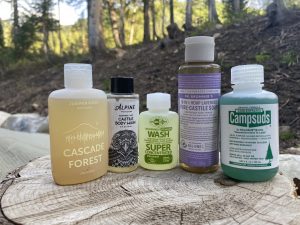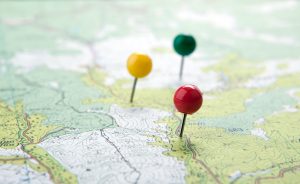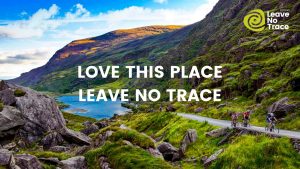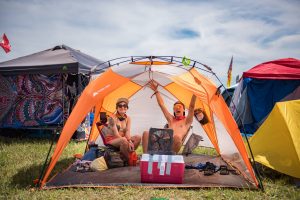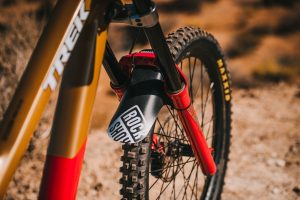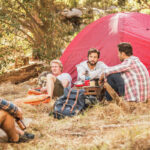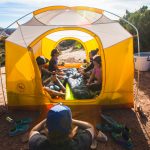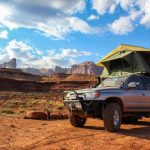Camping is an outdoor activity enjoyed by many people around the world. Not only does it provide you with fresh air and exercise, but it also gives you the opportunity to experience nature at its most pristine. If you are thinking about setting up camp on your bike this year, here’s everything you need to know about camping with a bike.
This article will cover the basics of camping with a bicycle, including what equipment to bring, how to prepare for your trip, and safety tips.
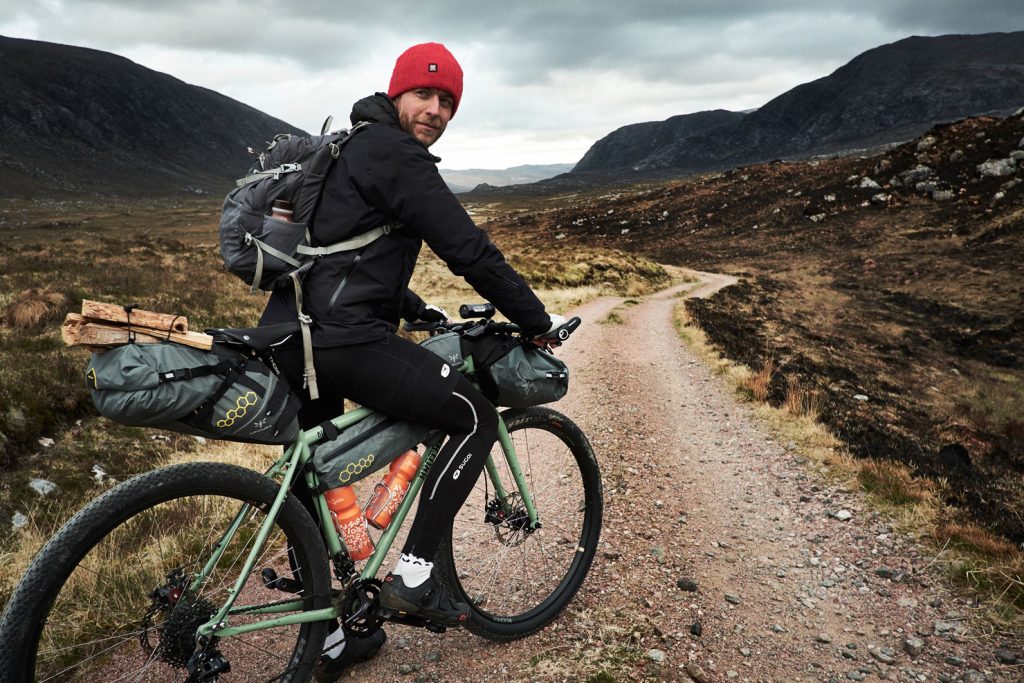
Table of Contents
Camping With a Bike Checklist: Preparation
It’s crucial to be as prepared as possible before you set out on your bicycle camping trip. You don’t want to be stuck in the wilderness without the proper gear, so here are a few preparation tips for your trip.
- Decide on the location of your campsite: choose an area with access to water and low river crossings, avoid camping in canyons or steep terrain and maintain good clearance from the road.
- Choose a bike trail: many dedicated trails exist for mountain bikers to ride at night. If you plan on camping during the day, you will need to carry your equipment on the bike.
- Pack enough food and water: you don’t want to run out of food and water on a bike camping trip. Bring enough for your entire adventure plus some extra, just in case.
- There are several equipment items you will need to bring before camping on your bike. Make sure you have them all packed up before leaving your house.
- Weather-appropriate bike: check the weather forecast before you leave to ensure that your equipment will be able to handle it.
- Choose your campsite: look for an open space to set up camp that is free from hazards, flat enough for your tent and tarp, and not too close to trails or other areas with high human activity.
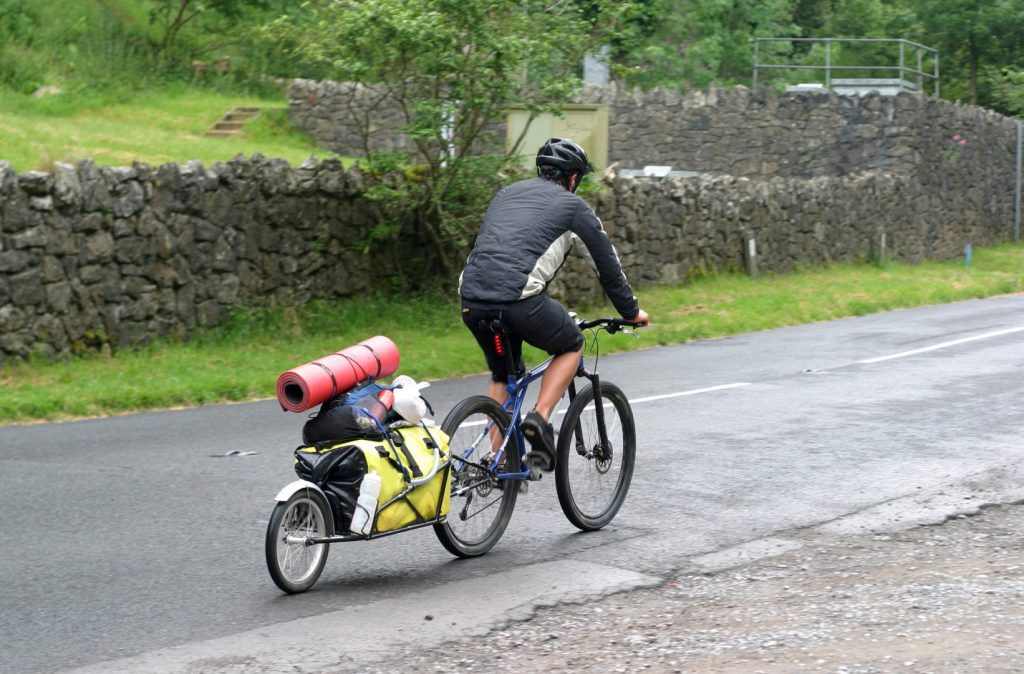
Camping With a Bike Checklist: Equipment to Bring
The items that you bring on your camping trip can make or break the experience. You want to be prepared for anything, but also pack light enough that you can easily transport everything on your bike.
Essential
- Tent and sleeping bag
- Sleeping pad
- Medium-sized bike pump, tire repair kit, and spare tubes
- Water filter or purification tablets to ensure a clean water supply
- Cooking stove and fuel, pots/pans for cooking meals
- Large plastic bags for protecting your clothes and food from the elements
- Flashlight/headlamp
- Sunscreen and insect repellent
- Multi-purpose pocket knife or multi-tool for bike repair
- First Aid Kit
- Extra clothing and a rain jacket
- Plastic bags for storing other items to protect them from the water or dirt

Camping With a Bike: Tips for Safety and Comfort
Even though you might be having fun on your bike camping trip, there are several safety precautions that you should take into account.
- Stay hydrated: drink plenty of water to avoid heat exhaustion.
- Be wary of wildlife: don’t approach or corner wild animals, and never feed them.
- Avoid natural hazards such as lightning, flash floods, and poisonous plants.
- Be aware of your surroundings: always be on the lookout for smooth or slippery surfaces that can cause you to lose control of your bike.
- Be prepared for emergencies: carry a first aid kit and know how to use all the equipment you have brought with you.
- Locate a campsite in advance: it is best to be able to plan your route ahead of time so you know where you are going to set up camp.
- Bring the right equipment: make sure you have all of your necessary equipment packed and ready before setting off on your bike.
- Check the weather forecast: always be prepared for changes in the weather and plan accordingly.
- Stay hydrated: drink plenty of water to avoid heat exhaustion.
- Be wary of wildlife: don’t approach or corner wild animals, and never feed them.
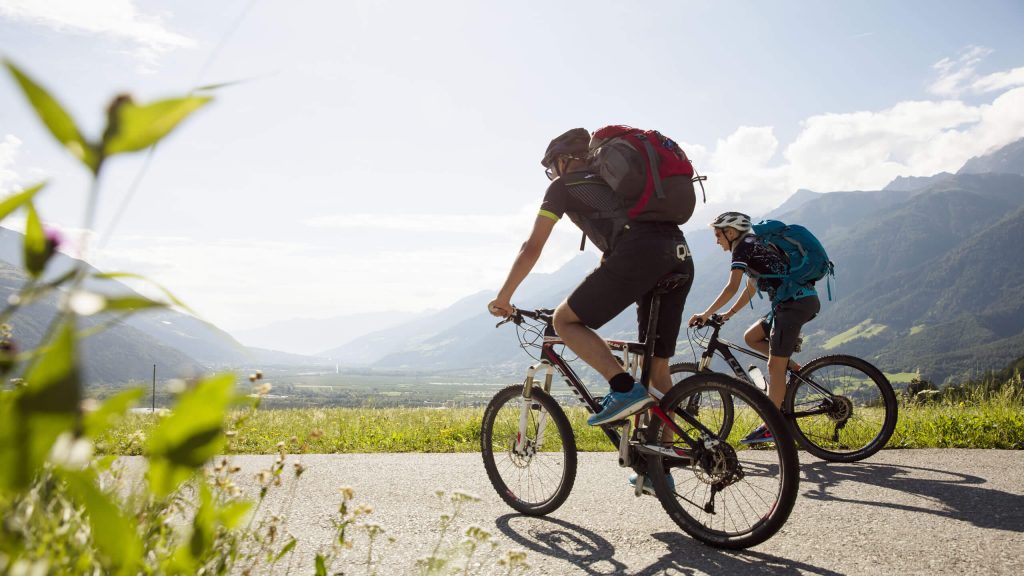
Camping With a Bike: Food and Water
Packing food and water for your camping trip is crucial to staying healthy. Here are some quick tips on what types of food to bring and how much.
All meals should be lightweight and simple to prepare, so think about what you will eat for breakfast, lunch, and dinner. Check out this food idea:
- Breakfast: For a quick and easy breakfast, pack cereal or granola, milk or yogurt, and fruit.
- Lunch: Pack sandwiches made with bread, meat (turkey/ham), cheese, vegetables, and condiments.
- Dinner: For dinner, bring instant rice or pasta dishes for a quick meal that is easy to cook over a campfire.
For more ideas on what to bring, check out this camping meal ideas blog post ——
- Note: Pack enough water to drink for the entire trip. You can also use your map or GPS system to find freshwater sources along the way.
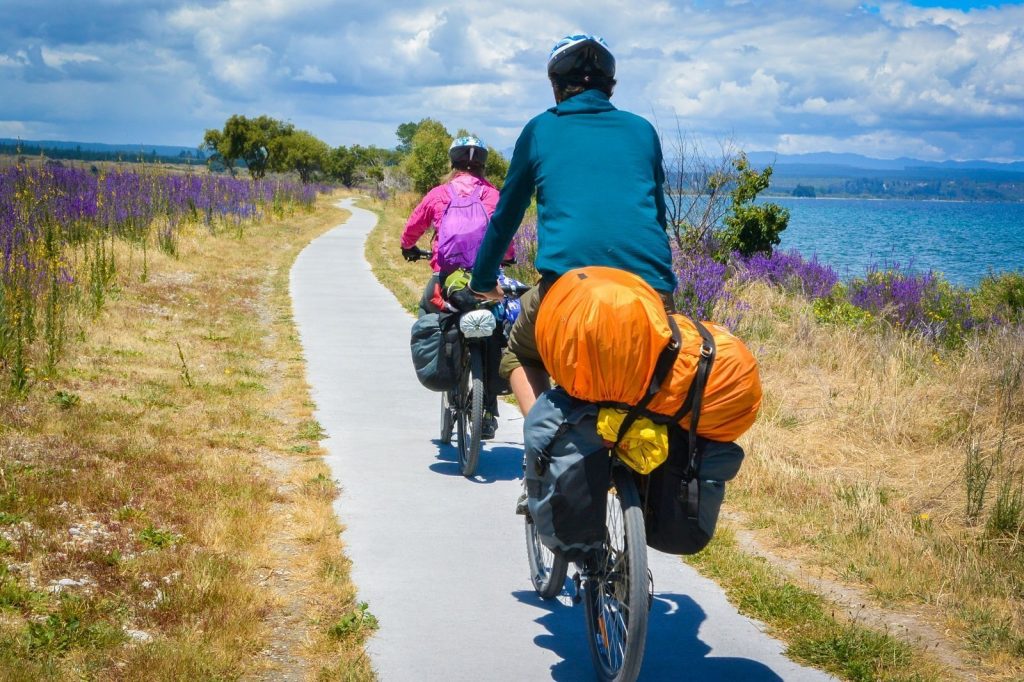
Camping With a Bike: Clothing
You should bring layers of clothes so that you can easily adjust your clothing if it gets too hot or cold. Here are some basic types:
- Wicking fabric: clothing made from this type of material is great at removing moisture and sweat.
- Rain gear: a poncho or rain jacket is great in case of sudden rainstorms.
- Outer shell: be sure to bring a warm jacket or coat for cold nights near the campfire.
Note: Make sure you check the weather forecast before you start your bike camping trip.
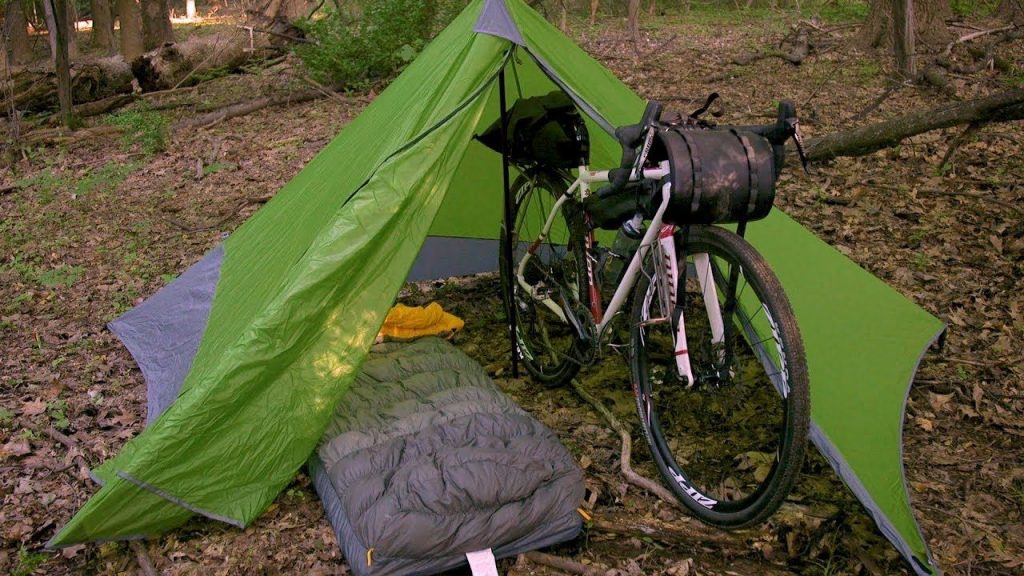
Camping With a Bike: Bicycle Essentials
If you are planning to camp on your bike, there are a few things that you should bring.
- Bike rack: if you are not camping near where you live, then a bike rack is necessary to transport your bicycle in the car.
- Extra tubes: always carry at least one extra tube with you, in case of a flat tire or another problem.
- Repair Kit: be sure to bring a repair kit for your bike, including tools and spare parts.
- Bike lights: These help you see in the dark and make your presence known to other people on the road. You should also wear bright clothing to increase your visibility.
- Bike Lock: always use a lock to secure your bicycle.
- Helmet: it is always best to use a bicycle helmet when riding.
- Bike Gloves: these can help with grip and comfort while you are riding.
- Note: If you are camping near where you live, then bringing other equipment like your bicycle might not be necessary.
- Phone/Gps mount: it is a good idea to bring your phone or GPS with you, in case of any emergencies.
Note: if you are riding a bike with gears, make sure to bring enough tools and know-how to fix any problems that might arise.
PS: Be sure all the equipment on your bike is working properly before you start your trip.
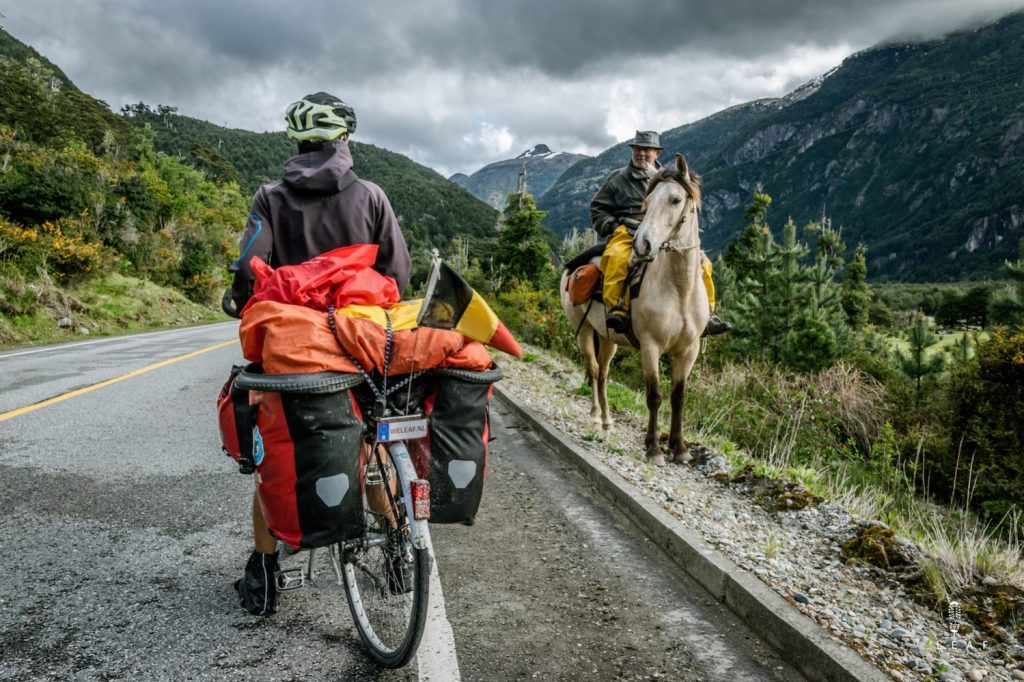
Camping With a Bike: First Aid Kit
As you are packing your camping gear, don’t forget to bring a first aid kit.
Basic supplies:
make sure to pack the following basic supplies:
- Bandages and tape for small wounds.
- Antiseptic wipes or ointment to clean cuts and scrapes.
- Pain relief medication like ibuprofen or aspirin.
- Moleskin/blister bandages for any sore spots on your feet.
- Sunscreen to protect yourself from the sun.
- Bug spray if you are camping near water or in a buggy area.
- Important medical information like your health insurance card and emergency contacts.
Note: It is always a good idea to bring more items than you might need so that you have backup supplies in case of any emergencies.
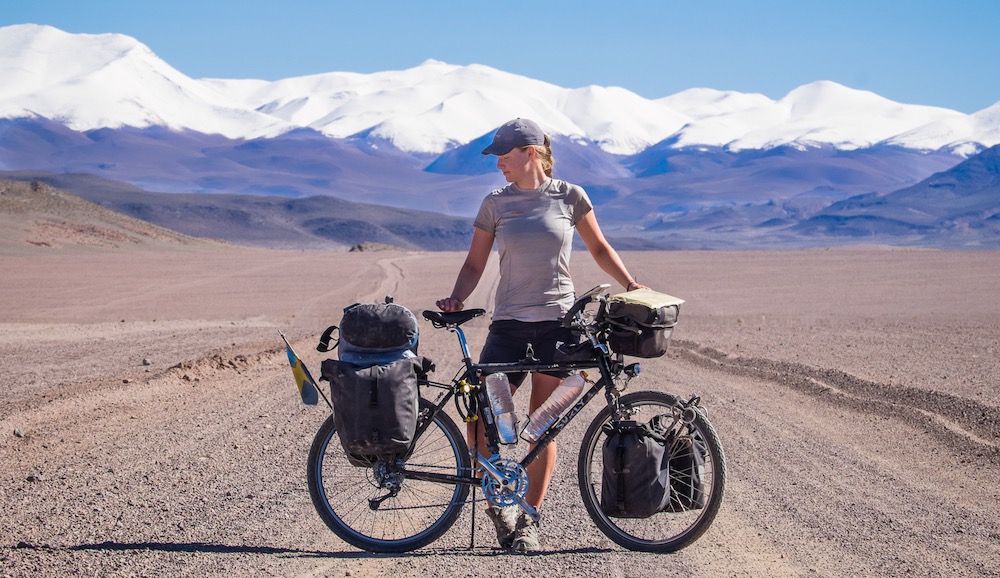
Other Important Items to bring
in addition to the basic supplies, you might want to consider bringing some of these:
- Prescription and over-the-counter medication like allergy medicine, cold and flu tablets, or diarrhea relief.
- Hand sanitizer to clean your hands before eating or preparing food.
- A small first aid book for reference in case of an emergency.
- Extra contact lenses, glasses, or sunglasses.
- Power Bank for any electronic devices that might need to be charged
Note: Add anything else to your first aid kit that you think might be useful for camping.

Bicycle Repair Kit
If you are camping near your home, it is not necessary to bring a lot of equipment with you. However, if you need something specific for your bike, be sure to pack it.
- Bicycle Pump – make sure you have enough air in your tires before every ride.
- Multi-tool – this tool has enough small tools on it that you can fix any problems while out riding.
- Spare tube – if your bicycle gets a flat, a spare tube can save your day.
- Patch kit – sometimes the spare tube gets a puncture or small tear. A patch kit can fix it so you don’t have to walk your bike back home.
- Chain Tool – if your chain breaks, a tool like this will help you fix it.
- Bike Lock – use to secure both your bike and whatever else you want to bring on your trip.
- Lubricant – a small tube of bike lubricant can make your ride smoother and quieter.
- Tire levers – if you need to change a tire, these make it a lot easier.
- Duct Tape – this can fix problems when nothing else will.
- Brake cables – if your brakes start to feel loose or not as responsive, a new cable can help.
Note: Add anything else to your bike repair kit that you think might be useful for camping.
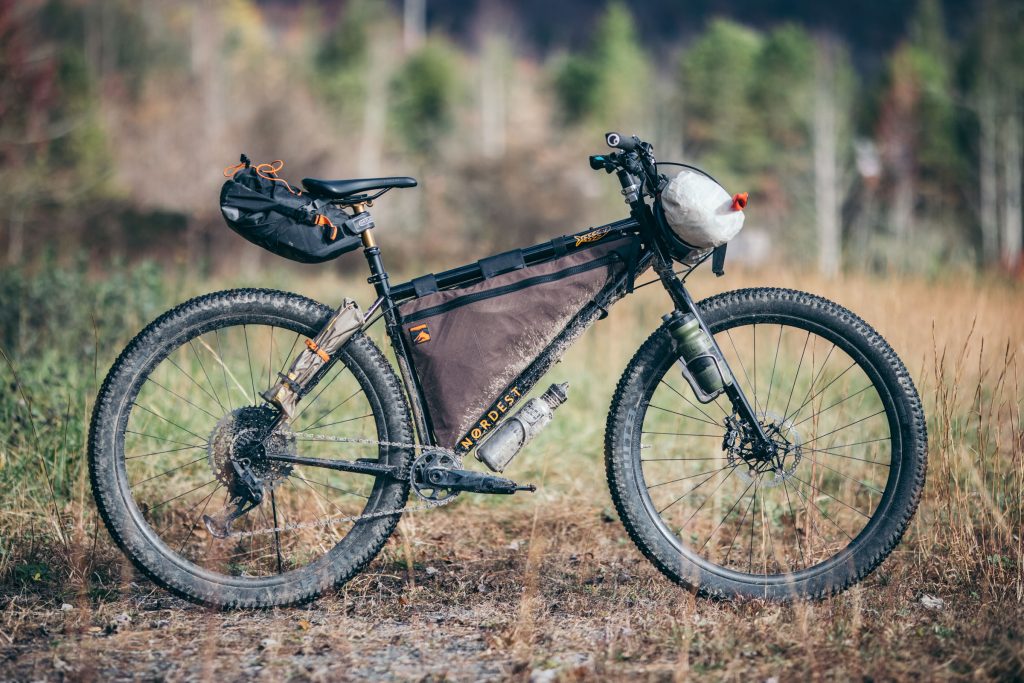
Camping With a Bike: Navigation and Safety
Before you leave on your camping trip, it is a good idea to do some research about the area. This includes:
- What terrain you will be biking on.
- Whether you need a map or other guide to find your way around, such as an app for GPS (Global Positioning System).
- Tracker: If you are traveling with other people, it is also a good idea to bring along some sort of tracker that can help others find you if needed.
- Compass: This will help you find your way if something happens to the GPS or map and you get lost.
- Finding out the weather forecast for both your camping area and also your home location.
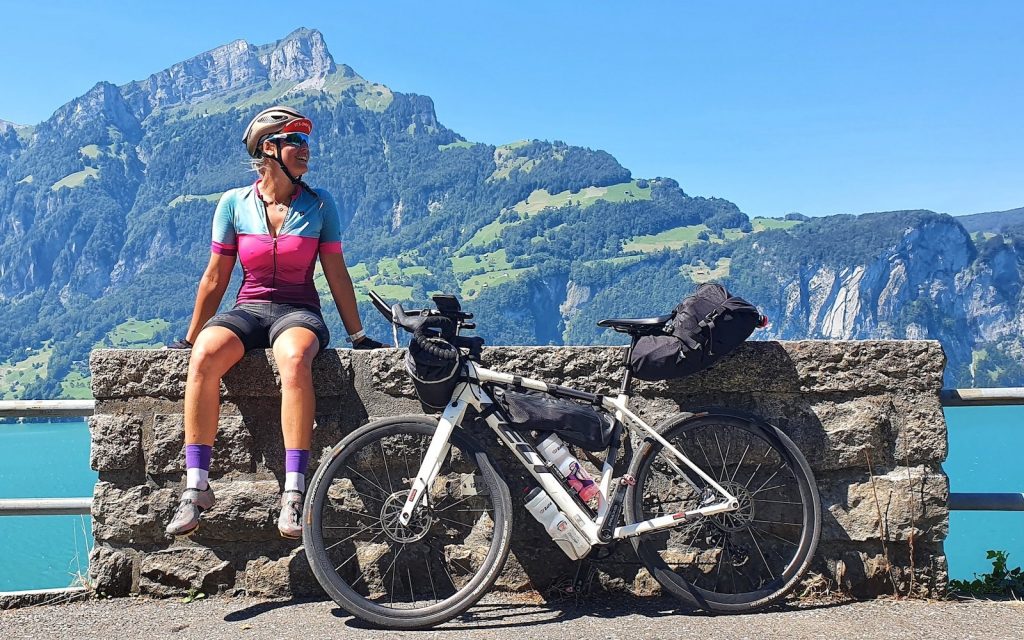
Camping With a Bike: Hygiene/Toiletries
One thing that can make camping difficult is having to go without all of your usual hygiene products.
Pack the following items:
- Toothbrush and toothpaste to keep your mouth clean and fresh.
- Wet wipes or a small container of baby wipes for cleaning hands, face, body, etc.
- Deodorant to keep you smelling good.
- Hand sanitizer to clean your hands before eating or preparing food.
- Lip Balm to keep your lips from drying out.
- Biodegradable soap to keep you clean.
- Dry shampoo/baby powder to freshen up your hair.
- Toilet Paper to help you clean up after using the bathroom.
- Tampons or pads if you are a woman and need them.
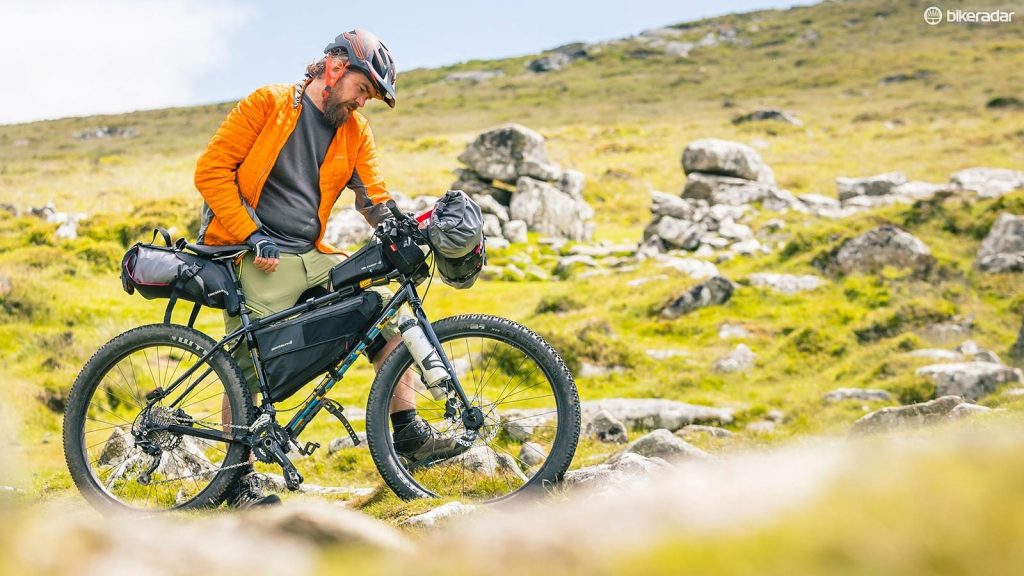
Camping With a Bike: Other Gear
Other gear that will come in handy includes:
- Shovel: a shovel is necessary in case of any natural emergencies.
- Extra clothing: it might be necessary to layer your clothing if you are camping in a cold area.
- Bug spray: this is especially important for places where there are a lot of insects and mosquitos.
- Sunglasses: Sunglasses will help protect your eyes from the sun and bugs.
- Camera: if you want to take pictures of your trip, bringing a camera will make it easy.
- Smartwatch/Fitbit/activity tracker: these will help you monitor your heart rate while exercising.
- Solar Power Charger: this will allow you to charge your other devices using the sun.
Note: Add anything else to your camping list that you think might be useful for you.
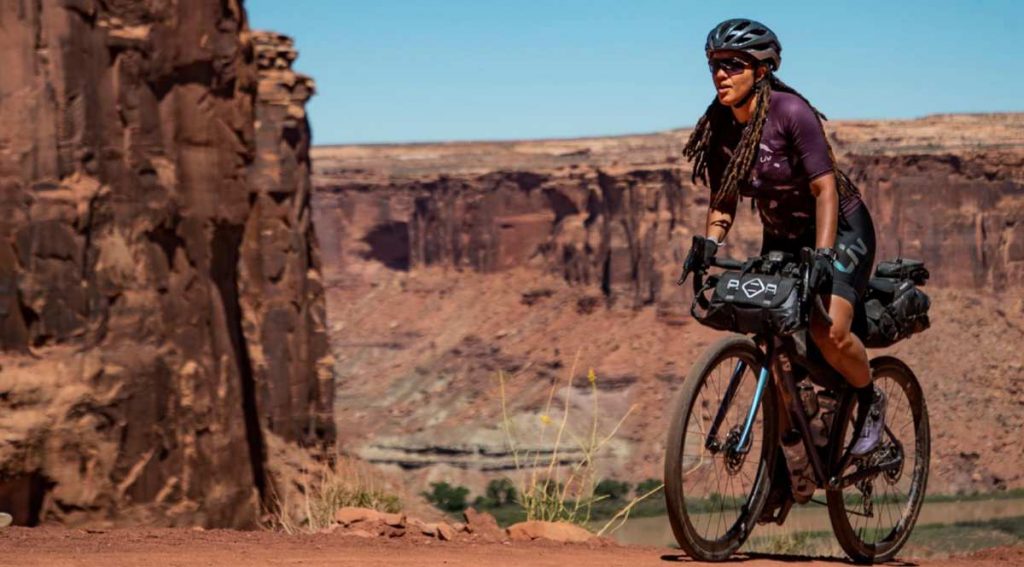
Camping With a Bike: Questions to Ask Before You Go
Now that you know the basics of camping with your bike, here are some questions you should ask yourself before going.
- How long do I plan on spending in the wild?
- Which area am I interested in?
- What type of terrain will I be traveling over?
- Will, there be any other people around me while camping, and if so how close?
- What type of weather will I be dealing with while camping, and for how long?
- Do I have any other gear or supplies I might need?
- Do I have enough money to cover all of my costs for a trip like this, including food and transportation back home?
- What route through the area will I be traveling?
- How far am I willing to travel for this type of trip and how much damage will the trip inflict on my bike?
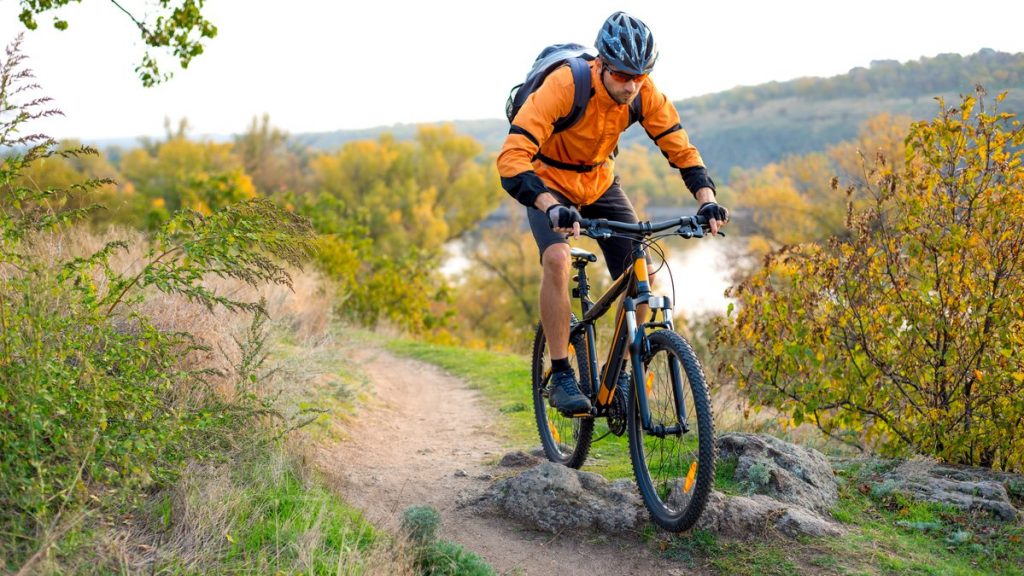
FAQ
Q.What other safety precautions should I be aware of while camping?
A. Camping alone can be dangerous, especially if you are camping in an area where there is no one around to help if something happens. Make sure to set up camp in a well-lit area where people can see you, and stay alert of your surroundings at all times so you don’t get lost.
Q. What to do if my bike break?
A. If your bike breaks while camping, you should stay calm and assess the situation before trying to fix it. Try to find out what is wrong with the bike and find a solution to fix it. If you cannot figure out how to fix your problem, call for help or leave the broken bike behind for now.
Q. What should I do if someone tries to take my bike?
A. If you are camping alone, it is best to park your bike in a well-lit area where people can see it. If someone tries to take your bike, you should try and stop them. If you cannot stop the person, call for help or leave your bike behind and get to safety.
Q.What can I do to stay safe while camping with my bike?
A. Make sure you are aware of your surroundings at all times. Make sure you have a first aid kit and other safety supplies with you as well to prevent any injuries from happening while out in the wilderness.
Q.What other things should I consider when camping with my bike?
A. If you are traveling by yourself, it is a good idea to bring along some sort of tracker that can help others find you if needed. You should also consider ending your trip early in case something bad happens, and you need to get home quickly.
Q.Can I go camping with my bike in the winter?
A. Absolutely! Winter camping is a great way to see the beautiful scenery and wildlife that winter has to offer. While you do need to consider some different things, such as staying warm and dry, winter camping can be a lot of fun.
Q.What should I do if I get lost while camping?
A. If you get lost, stay where you are and try to signal for help if possible. You should consider staying in one place until someone can find you.
Q. Are there any dangers to the environment when camping with a bike?
A. When you are traveling by bike you are able to travel long distances and go places cars can’t. This might cause damage from wear, but it is also a great way to take in what nature has to offer. You should make sure that your camping area is not too close to any natural habitats, and if you do camp close to a natural area make sure you clean up your garbage and other items when done.
Camping With a Bike: Conclusion
As long as you are prepared for the trip, camping with a bike can be an amazing experience. Make sure to stay safe and follow all of these tips before you head out on your trip.

